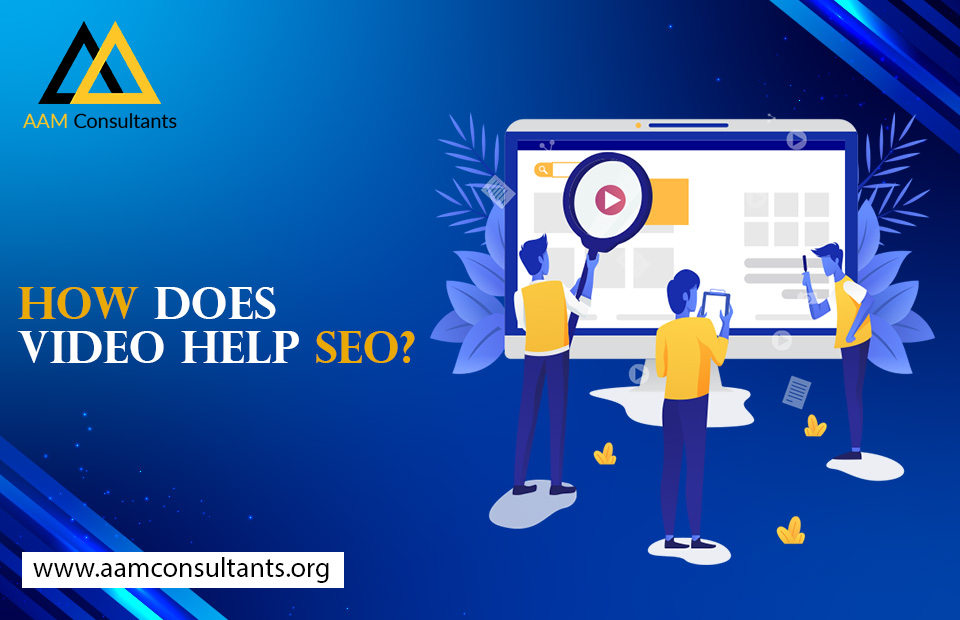Search engine optimization (SEO) has come a very long way from its early days. Keywords and (back)links still matter but you can’t just stuff them in and rocket up the rankings, quite the opposite. These days, if you want to win at SEO, you need to be prepared to produce great content in a variety of formats. Video is often one of the major keys to success.
Hire AAM Consultants for link building and SEO Services.
Why is video good for SEO?
Modern search engines base their organic results on user engagement. They have several ways to measure this. Some of the most obvious ones include likes, shares, and comments. There are, however, a lot of more subtle measurements. For example, search engines can tell how long a person stays on a page and what they do after visiting it.
In short, therefore, companies need to do everything possible to achieve maximum engagement with their content strategy. This is clearly good practice even without SEO considerations. Using video strategically is often vital to making this happen. There are two key reasons for this. Firstly, video is easy to consume. Secondly, video is easy to share.
How does video help SEO?
Even though the term “video” probably evokes thoughts of moving images, there’s actually a lot more to video than this. Video can include both sound and text. They can also include graphics such as infographics, tables, and charts as well as traditional images. Video is, therefore, arguably, a multimedia format in a single package.
What’s more, video is a very easy format to consume. You literally just click the play button and let the video run. You only need to take action if you actively want to stop the video. This is significantly different from long-form text, e.g. blogs, and multi-image formats, e.g. carousels. In both cases, you need to take action to keep consuming the content.
The end result of this is that using video generally gives you the best chance of having a user consume your content piece from beginning to end. This is a really positive signal to the search engines. You can push your rankings up even further by using appropriate calls to action, for example asking people to share your video.
Video content is hugely shareable. There are several reasons for this. Many, however, ultimately boil down to the fact that it’s so easy to consume. In particular, it’s easy to consume on mobile devices. These are increasingly being used for personal internet consumption, even in the home. In fact, it’s not particularly uncommon for them to be used for work purposes.
For small businesses, another bonus of video is that, again, used strategically, it can help your page-load times. Essentially, you would host the video externally, for example on YouTube. You would then embed a link to it on your site. Using this approach, most of the resources would be provided by the external site. Your site, however, would get the SEO benefit of the user staying on your page.
How does video marketing help SEO?
Video isn’t just for your own website. Video marketing can also do a lot to help your SEO. In simple terms, the aim of your video marketing (and indeed all of your marketing) should be to push traffic from the marketing platform to your own website. If you achieve this aim, your next goal should be to get users to engage with your content and hence win “SEO points”.
Even if you have the budget for paid marketing, you should still try to maximize your return on investment by getting maximum organic reach. This is where video comes in. As previously mentioned it is hugely shareable. This means that you’re maximizing the chance that people who receive your video as a paid post will go on to share it with their friends for free.
If you don’t have the money for paid posts (or at least not a lot of them), then video is arguably even more important. You’re going to have to rely (almost) completely on organic exposure. Right now, video gives you by far your best chance of getting it. All the main social media platforms are fighting to steal YouTube’s crown as the top video platform.
Realistically, YouTube looks safe for now but that will not deter the other sites from trying to grab as much as they can. They are therefore actively and heavily rewarding people who produce video content for their site, particularly if that content is, or appears to be, optimized for their site. For example, Tiktok and Instagram want videos shot in portrait format. Facebook and LinkedIn have different aspect ratios (height and width) to YouTube.
Dealing with these “format wars” is generally more about organization and process than money. If the budget is tight, you can use converters. Digital cameras are, however, fairly affordable. This means that it can often be fairly straightforward to have one camera shooting in portrait and the other in landscape. You can then make any necessary tweaks with editing software.
The cost of producing video
In the real world, when it comes to producing video, the elephant in the room is the effort it takes to create as compared to other formats. Companies may know that video has a great return on investment but you have to be able to make the investment first. The good news is that it is still very possible to get started with a video on a minimal budget and upgrade as you go.
Very small businesses could shoot videos on phone cameras. These are improving all the time. If you have a little money, then an entry-level digital camera can produce excellent results. After this, you can go all the way up to professional equipment and/or hire professionals to make your videos for you.
Whatever your budget, you should aim to invest in lighting, a microphone, and a tripod. Again, there are some excellent budget-level options out there to get you started. Then, as you gain traction, you can upgrade if you want to. Your last investment is in writing and editing. These are both crucial to your success.
The simple rule here is to work within your means. If you only have a very basic filming set-up then write scripts that reflect your constraints. Similarly, if you only have minimal editing skills, stick to “touch-up work” rather than special effects. Again, as you gain traction and your budget increases, you can upgrade your set-up if you wish.




